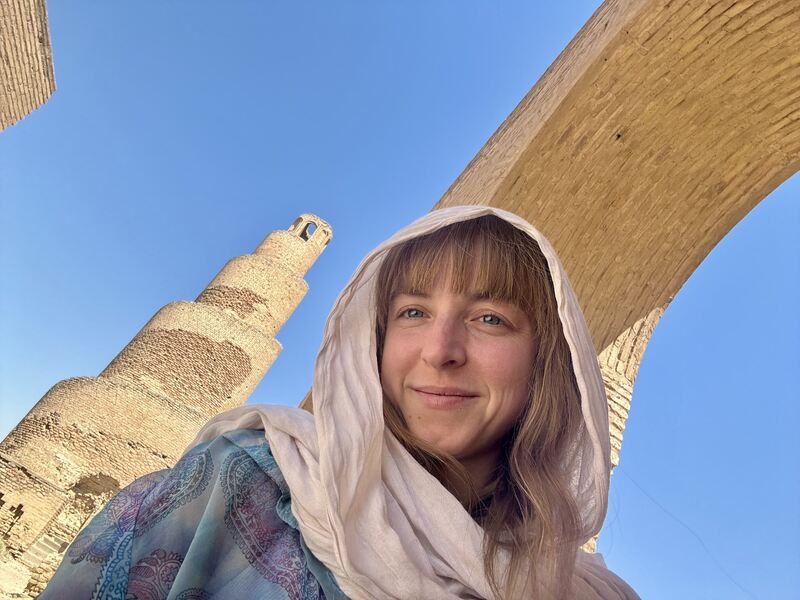The Great Mosque of Samarra is one of the most iconic landmarks in Iraq.
The Great Mosque of Samarra was once the largest mosque in the world. It was built in the 9th century, and its unique spiral minaret, the Malwiya, remains an iconic symbol in Iraq.
Located in the city of Samarra, about 125 km north of Baghdad, the mosque is part of a UNESCO World Heritage site (since 2007).
It's not the easiest place to visit in Iraq. So, you should definitely do your research on visiting the Mosque in Samarra before you attempt the journey.
But, it's worth it. Not just the spiralling minaret, but it’s actually an entire archaeological site where you’ll need about an hour at least to explore.
And, of course, climb the minaret - if you dare.
Samarra Mosque
The Malwiya Minaret
Visiting the Samarra Mosque & Spiralling Minaret

Samarra Mosque
A mosque unlike any other you've seen.
Probably.
Commissioned by Caliph Al-Mutawakkil in 848 CE, the mosque once covered a vast 17 hectares.
Its walls stretched 444 metres by 376 metres, built of baked brick and decorated with intricate geometric designs.
Samarra Mosque History
The mosque’s layout and scale reflected the Abbasid ambition to create a grand imperial capital.
Samarra became the second capital of the Abbasid Caliphate. The empire stretched from North Africa to Central Asia. Today, Samarra is the only Islamic capital that still has its original layout and architecture.
The name "Samarra" comes from the Arabic phrase Surra man ra’a, meaning “a joy for all who see it.”
In 1278, the Mongols invaded under Hulagu Khan and destroyed much of the mosque. Only the outer wall and the minaret survived.
The Malwiya Minaret
Accompanying the mosque, the real star is actually the Malwiya Minaret. The spiral minaret towers above.
Originally, the spiralling minaret was connected to the Samarra Mosque by a bridge.
This is a 52-metre-high tower that spirals up in five broad tiers. The name Malwiya means twisted in Arabic, a fitting title for this corkscrew-like design.
At the time of its construction, it was revolutionary. Even today, it's instantly recognisable and unlike any other minaret in the Islamic world.
Its spiral ramp winds counter-clockwise all the way to the top. An imam would climb up to call people to prayer.
It was built under the Abbasid caliph Al-Mutawakkil. He moved to Samarra from Baghdad to avoid conflict and ruled from there for 56 years.
During that time, he built many grand palaces, including this mosque.
Climbing the Spiralling Minaret
You can climb to the top via a ramp that coils around the tower’s exterior. The top offers sweeping views of Samarra and the surrounding plains.
But it is quite a bit scarier than it looks.
There is some debate about its original purpose.
While clearly a minaret, some scholars suggest it also acted as a symbol of Abbasid power.
And a design it wasn’t originally planned for... The minaret was once actually used by American soldiers as a lookout post during the Iraq War.
Some suggest that its grand, unusual design was possibly inspired by Mesopotamian ziggurats.

Visiting the Samarra Mosque & Spiralling Minaret
Much like the Ziggurat of Ur and other sites in Iraq, the minaret is featured on Iraqi currency and stamps.
Samarra is accessible by road from Baghdad. However, due to unrest in the area, you should travel with a guide to ensure safety and access to the Samarra Mosque.
Allow at least an hour for a visit! You’ll want to walk around and take photos.
And, climb, of course.